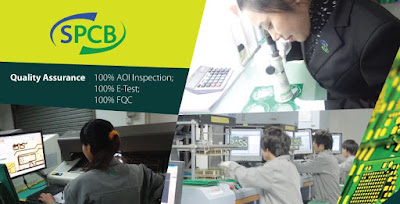The demand for PCBs (printed circuit boards) will seemingly not decrease in the near future; futuristic mobile phones, BluRay disc players, plasma TVs, electric cars have all made certain of this. PCB manufacturing technology is also not relenting and is up to date with modern electronic goods requirements. As an electronics manufacturer, we simply cannot be ignorant of modern PCB tech - the varieties of PCBs being as many as they are representative of the numerous modern PCB techniques and processes only recently developed. The design and manufacture of PCBs should be left to companies equipped with the latest of PCB equipment used in the prototyping and actualization phases.
PCB manufacturing can be divided into manufacturing the boards with or without components. Blank PCBs can be single or double-sided. Different PCBs have different capacities. We can have multilayered PCBs manufactured via techniques such as PCB milling, copper etching, screen printing etc. Most PCB fabrication companies also offer prototyping services - this involves developing a working PCB model before actual mass production can commence.
The raw materials used in PCB manufacturing are varied but copper is the basic material. Copper is always coated using a tin-lead combination to protect it against oxidation. The industry standard for PCB contact points is copper covered with this lead-tin combination, plated with nickel, and finished off with gold to maintain excellent conductivity. The quality control considerations that the manufacturer works by are a point to look out for. This involves the various visual as well as computerized scrutinies of the printed circuit board manufacturing steps from the conception to shipping stages. It also details the steps taken to rectify flaws and faults in the process.
PCB board manufacturing can be a very harmful process both to humans and the environment. This is especially so where the element Lead is present. A PCB manufacturing plant should be able to clearly define the safety considerations it has in place to deal with toxic matter, ways of disposing of obsolete PCBs, the recycling processes, and the modern human and environmentally-friendly equipment and processes they have in place.
The manufacturing process deployed is crucial as the working of the PCB and therefore the different equipment used in PCB manufacturing are complex and sensitive. The fabrication environment is also a controlled one so as to prevent the PCBs from any contamination. Your PCB firm of choice should be able to guarantee this even for the final product packaging process. Ignoring this is equal to putting your company and its electronic products' reputation in jeopardy. When partnering with a PCB manufacturer, it is important to choose a firm with extensive experience. As a customer, you should also be verifying if the firm has a proven track record.










